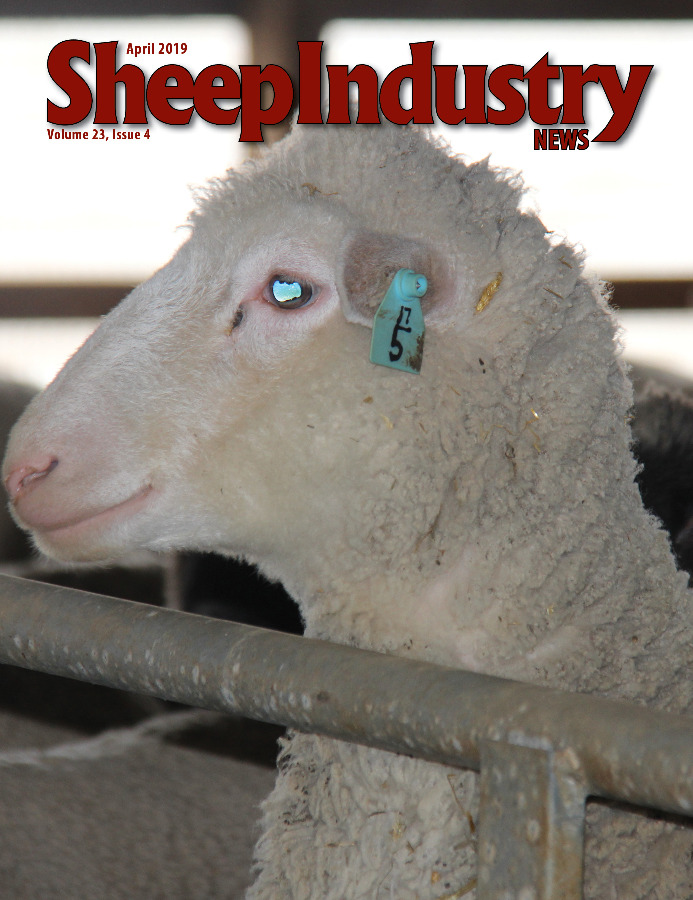Wool value totaled $42.77 million in 2018, the highest level since 2011 when value topped $48 million and international wool prices were at record highs. Between 2011 and 2018, American wool prices dropped 5 percent to $1.75 per lb. greasy, on average, but production dropped 17 percent. Overall, high wool prices – especially for fine wool – have propelled the value of the American wool clip to historic highs in spite of the wool clip contracting. Prices of medium-fine and coarser wools haven’t fared as well, but are making a comeback. About 70 percent of the American wool clip is less than 24.5 micron.
Wool production expanded in 2015 to 27.0 million lbs. However, in 2016 wool production contracted 4 percent and another 5 percent in 2017. In 2018, wool production totaled 24.4 million lbs., down 2 percent annually.
In 2018, eight states produced 65 percent of the American wool clip. These states also each produced more than a million lbs. of greasy wool in 2018: California, Wyoming, Utah, Colorado, Texas, South Dakota, Montana and Idaho. California produced 2.4 million lbs. and Idaho totaled 1.5 million lbs. greasy. For many years, Texas ranked No. 1 in wool production. Ten years ago, Texas produced 3.5 million lbs. Years of drought, general inventory contraction and a switch for many into hair sheep accelerated the transition. Two states – Oregon and Iowa – used to produce more than a million lbs. a decade ago, but now total 700,000 to 800,000 lbs. each.
Tight international supplies of wool will likely support wool prices this year and hopefully support wool grower returns. By March 7, the Australian Eastern Market Indicator averaged 2,008 Australian cents per kg clean, down for the second consecutive week, but up 2 percent from February and up 13 percent year-on-year. In U.S. dollars, the EMI was $6.52 per lb. clean. The Australian market saw some softening because the “good style wools with favorable additional measurement results and low vegetable matter” were in short supply (AWEX, Weekly Wool Market Report, 3/7/19). The bulk of the wool offering was “lesser styled wools.”
Finer wool continued to receive premiums in Australia and the Australian futures market suggested premiums could rise in the near future. Australian future trades settled at 2,280 Australian cents per kg for April and May, and 2,250 Australian cents per kg for June (AWI, The Woolmark Company, Wool Market Weekly Report, 3/1/19).
There is some concern that high wool prices levels are not sustainable. “Processors are left having to buy hand to mouth to run machinery while not being able to pass the cost of production down the pipeline,” reported the Wool Market Weekly Report (3/1/19).
There is also caution in the market as the U.S.-China trade war continues as of this writing. In 2018, American wool exports amounted to 84 percent of the wool clip. If there is no deal to stop the Chinese export wool tariff rise from the current 10 percent to 25 percent, the penalty tariff will virtually stop exports to China. In 2018, China took 59 percent of all American wool exports and 49 percent of the 2018 total American wool clip.
If the current penalty duty of 10 percent remains or an agreement is made to eliminate the penalty tariffs on wool, then it is most likely that wool business with China will continue strongly, but a 25 percent tariff will “kill” that market. The American wool industry is working on diversifying its export markets.
Overall, American quality has improved for growers raising wool sheep. Recent and sustained high prices for medium-fine wool will continue to be an impetus for a high-quality American wool clip this spring.


